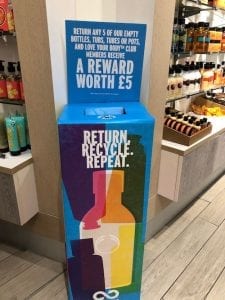
Environmental concerns are increasingly important to consumers. Businesses are responding. Amazon, for example, announced in September the purchase of 100,000 electric delivery vans.
Ecommerce is not very eco. It’s frequently the opposite. A next-day delivery — where a driver travels 45 minutes each way for a $7 item in a single-use plastic package — makes no sense for the planet.
To be sure, consumers love the convenience of ecommerce. But increasingly they value brand purpose and trust.
Until recently, environmental issues didn’t much matter. But attitudes are changing fast. Environmentally concerned shoppers are rapidly becoming mainstream. Four million people took to the streets worldwide for the September 20 “Global climate strike,” demanding bold action.
This is especially true of younger consumers who have grown up with climate science as part of their education. Many are frustrated about a lack of progress by both governments and companies to tackle carbon emissions, as evidenced recently by an angry address at the United Nations by Greta Thunberg, the 16-year old Swedish activist. Given the audience of world leaders, her language is remarkable and direct.
Dave Clark, Amazon’s senior vice president of operations, announced in September that Amazon is purchasing 100,000 electric delivery vans, perhaps signaling a tipping point on the importance of environmental sensitivity.
Patagonia, the outdoor clothing retailer, has strong eco-credentials. It has committed to being carbon neutral by 2025 (i.e., emitting no net carbon dioxide). My company, SAP, has the same 2025 goal. Other brands such as Bosch have committed to being carbon neutral as early as 2020. Amazon is aiming for 2040.
Most carbon emissions in ecommerce come from supply chains. Ninety-seven percent of Patagonia’s emissions come from its supply chain — 86 percent come from Patagonia’s raw materials and associated logistics. This adds complexity to becoming carbon neutral because many emissions are from suppliers, their method of manufacture, and their shipping methods. Thus an additional factor in choosing suppliers is eco-credentials.
So how can ecommerce merchants quickly make an impact? Here are three fixes.
3 Fixes for Greener Ecommerce
Order management. BOPIS (buy online and pick up in-store) and in-store reserve are greener delivery options than a direct shipment from a distribution center. A BOPIS customer journey leverages a truck that was already delivering inventory to the store. Likely a BOPIS customer combines errands and, frequently, purchases multiple items at the store.
Beyond BOPIS, shipping goods directly from the closest store (versus a distant distribution center) also reduces carbon emissions while potentially enabling same-day delivery.
Merchants without physical stores can ship from the closest distribution center or otherwise minimize the route. Check your shipping rules to analyze.
Packaging. Packaging of the product and its fulfillment are critical.
For example, consumers that seek little or no plastic in their lives struggle with consumables such as shampoo and the packaging it is shipped in. Providing easy ways to recycle product packaging in-store is a proven winner. It also brings shoppers back.
For example, The Body Shop, a cosmetics company, is a longtime leader in ethical sourcing and recycling. It gives customers an in-store credit when they return five product containers for recycling.
Delivery packing is also highly visible. Avoid single-use plastics. Consider recycled cardboard and shredded, recycled paper packaging.
Continuity commerce. Selling products on continuity programs, where goods are automatically shipped to customers, can boost profits by 40 percent and tap into green consumer sentiment. Replenishment items can be shipped in recyclable, lower-cost packaging versus one-time retail items. An additional step is to provide an envelope so that the customer can return the empty refill container for recycling.
Sustainability
Tactical measures are a start. A more strategic approach for getting greener is measurement — understanding your carbon footprint. There are vendors that will produce a carbon balance sheet for your company. It would identify where you are, how much work to do, and the biggest problems. In my experience, most companies have many liabilities and not many assets. It’s often a wake-up call for management.
Consider a simple, three-stage sustainability strategy: “avoid,” “reduce,” and “compensate.”
- Avoid. Find areas where you can avoid carbon emissions altogether, such as reducing air-freight shipments. Communicate this to shoppers when completing a purchase, to help them factor in price, speed of delivery, and emissions. (One transatlantic flight is equivalent to almost 10,000 miles by car in terms of carbon emissions.)
- Reduce. Identify options for carbon reductions, such as switching suppliers, encouraging suppliers to reduce emissions, and changing raw materials. This, too, can be shared with customers. Many would reduce the number of single orders, combining shipments wherever possible.
- Compensate. Use carbon offsets for unavoidable areas. Choose offsets that are audited and otherwise achieve a verified incremental impact on removing CO2 from the atmosphere. The most effective approach is often new forest planting projects, which extract CO2 out of the air. You could also offer customers the option of buying carbon offsets as part of their purchase. Airlines do this already. It adds a few dollars to the fare, typically.





